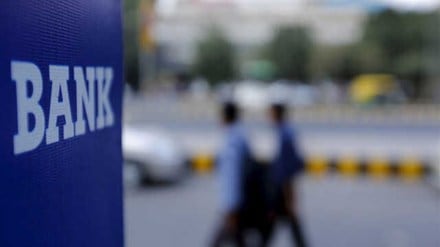By Amriteshwar Mathur
Mid and small-sized banks have faced intense selling pressure over the past few trading sessions. In fact some of these banks many of them are trading close to their 52-week lows. The above development comes at a time despite the recent measures taken by RBI to stimulate the broader economy including cutting the repo rate along with liquidity infusion of nearly Rs 1.5 lakh crore in phases.
Meanwhile, IDFC First Bank ended Tuesday’s trade at Rs 58.8 and not too far from its 52-week low of Rs 56.5 that was reached on 27 January 2025.
Similarly, Ujjivan Small Finance Bank ended Tuesday’s trade at Rs 31.55 vis-à-vis its 52-week low of Rs 30.85, while AU Small Finance Bank was at Rs 524 vis-a-vis its 52-week low of Rs 492.8 that was reached on 19 February 2025.
In contrast, large banks have fared much better – HDFC Bank ended Tuesday trade at Rs 1,683.6 vis-a-vis its 52-week high of Rs 1,880 while Kotak Mahindra Bank at Rs 1,968 is not too far from its 52-week high of Rs 1,994.
Problems at mid and smaller-sized banks
The domestic economy had shown sluggish growth in the first half of FY 25 and the central bank had downgraded real GDP growth forecast to 6.6 % for FY 25 from the previous forecast of 7.2 per cent in its December 2024 policy meeting.
And several smaller banks have seen deterioration in their asset quality, given the sluggish growth in the broader economy. For instance, in the case of AU Small Finance Bank, its % of net NPAs to net advances was 0.91 % in the third quarter of FY 25 vis-à-vis 0.68 % a year earlier.
And in the case of Ujjivan Small Finance Bank, its % of net NPAs to net advances was 0.56% in the December 2024 quarter vis-à-vis 0.17 % a year earlier. For Jana Small Finance Bank, its % of net NPAs to net advances was 0.94 % in the December 2024 quarter vis-à-vis 0.71 % a year earlier.
Analysts point out to difficulties related to especially micro loans of mid and smaller-sized banks at a time when the economy has experienced slowdown and the related difficulties of borrowers from lower income segments.
In contrast, larger banks have benefited from fairly strong asset quality – in the case of SBI, its percentage of net NPAs was 0.53 % in the December 2024 quarter vis-à-vis 0.64 % a year earlier.
For ICICI Bank, its % of net non-performing customer assets to net customer was 0.42 % in the third quarter of FY25 vis-à-vis 0.44 % a year earlier.
Investors on Dalal Street
The recent Union budget had also taken steps to bolster growth in the economy with tax free incomes up to Rs 12 lakh. Also, on Monday, the central announced the reduction in risk weightage for bank’s micro loans and the benefit will be felt over the next few quarters.
In the case of Ujjivan Small Finance Bank, it trades at a P/E of nearly 6 times estimated FY 25 earnings while AU Small Finance Bank trades at nearly 18 times estimated FY 25.
IDFC First Bank also trades at nearly 25 times estimated standalone FY 25 earnings.
Leading private sector banks like ICICI Bank and HDFC Bank trade at nearly 19 times estimated standalone FY25 earnings. Clearly, valuations of mid and small-sized banks do appear expensive in the short-term.
The central bank has broadly signaled softening in interest rates regimes, given several recent steps taken. Investors will be closely watching this with regard to mid and small-sized banks’ improvement in asset quality and other operational parameters, going forward.
However, investors need to adopt a wait-and-watch attitude before making any investments in small and mid-sized bank stocks.
Disclaimer
Amriteshwar Mathur is a financial journalist with over 20 years of experience.
Disclosure: The writer and his dependents hold stocks discussed in this article.
The website managers, its employee(s), and contributors/writers/authors of articles have or may have an outstanding buy or sell position or holding in the securities, options on securities or other related investments of issuers and/or companies discussed therein. The content of the articles and the interpretation of data are solely the personal views of the contributors/ writers/authors. Investors must make their own investment decisions based on their specific objectives, resources and only after consulting such independent advisors as may be necessary.
